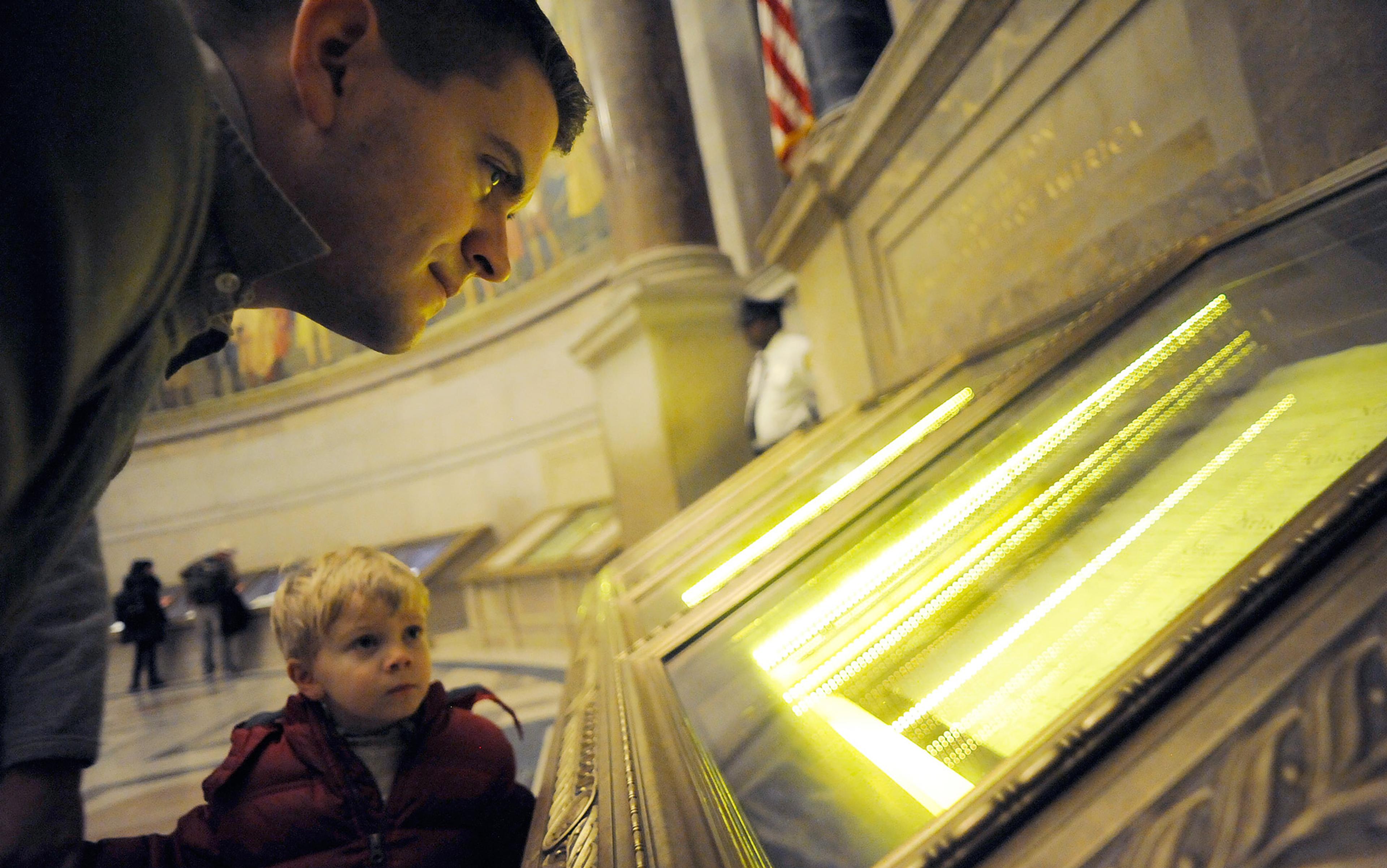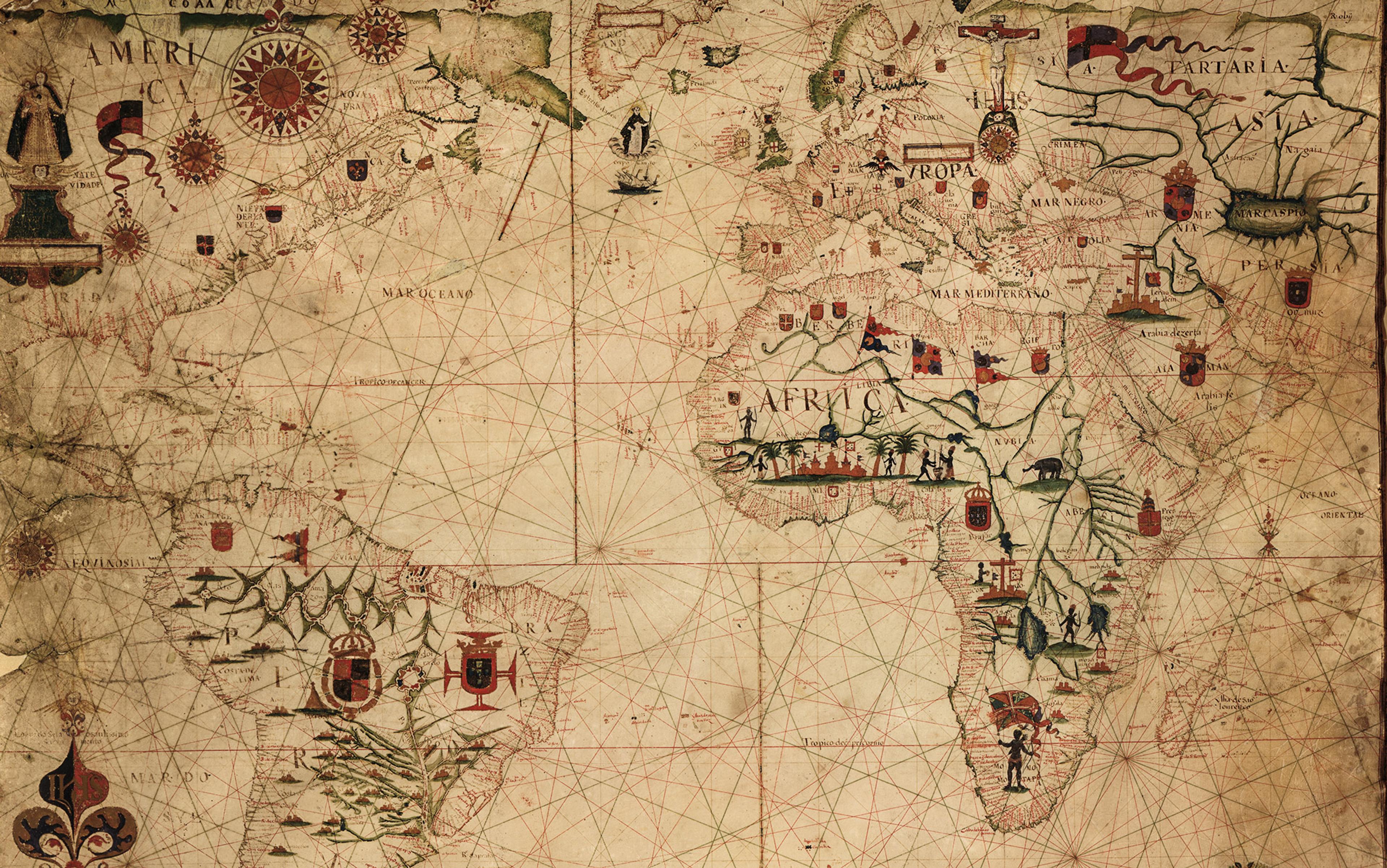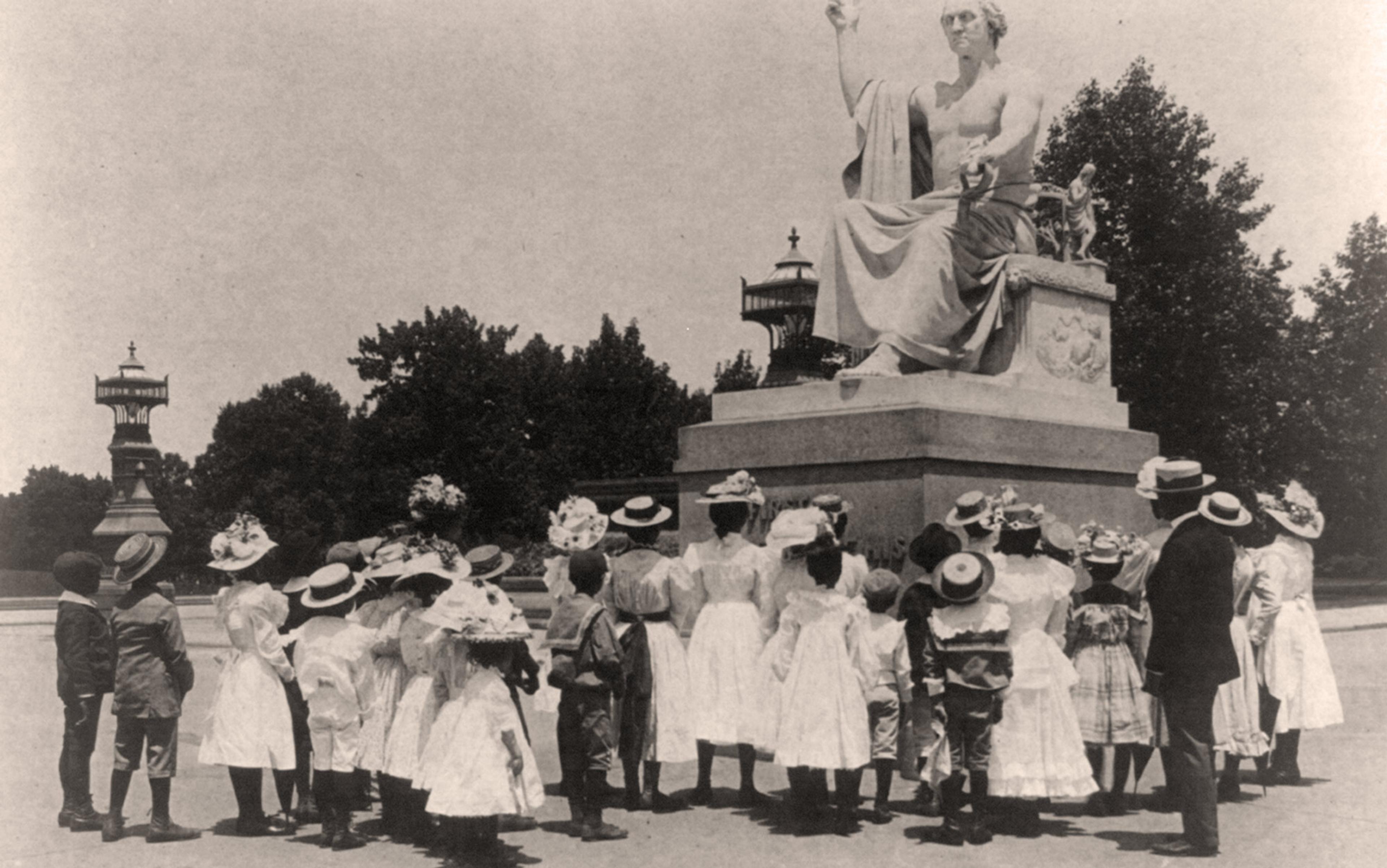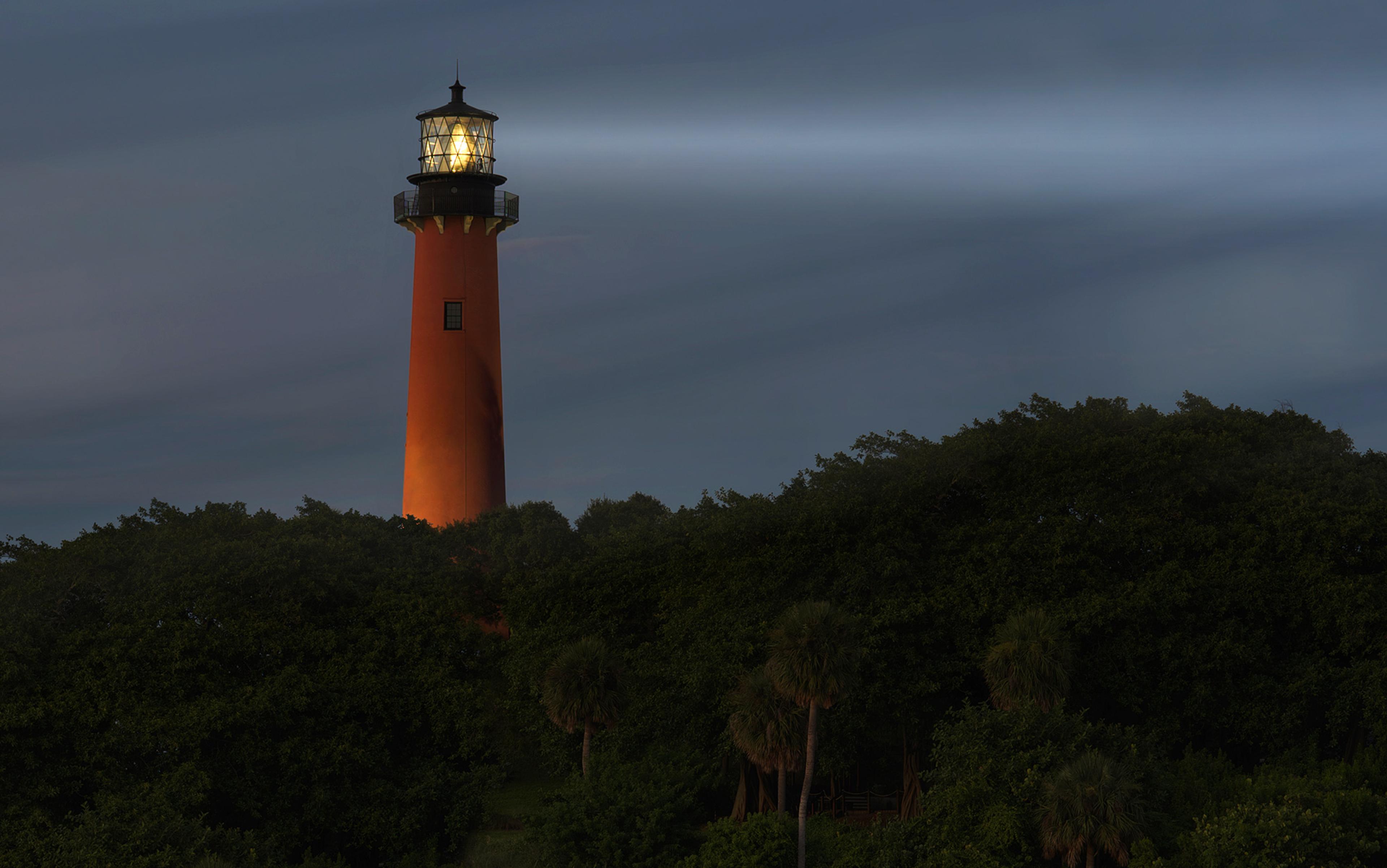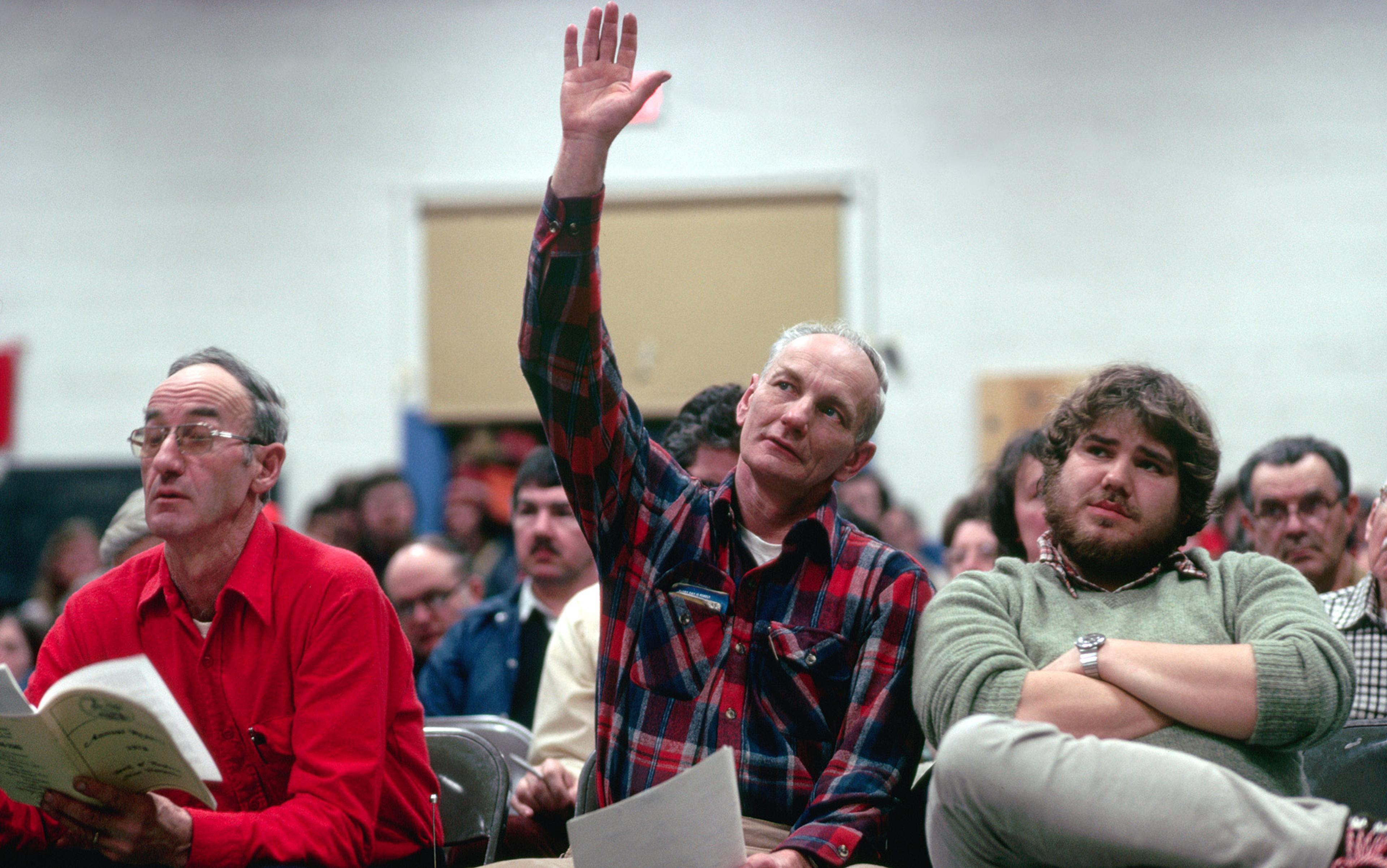In the national mythology of the United States, the American revolutionaries were sure about everything. They wrote the Declaration of Independence, not the Suggestion of Independence. They trafficked in the rugged cargo of self-evident truths and common sense. ‘I dwell not upon the vapours of imagination,’ wrote Thomas Paine in the midst of the American Revolution. ‘I bring reason to your ears, and, in language as plain as A, B, C, hold up truth to your eyes.’
But were the American revolutionaries really so sure about their world? So allergic to vapours of the imagination? So keen for truth wrapped in plain language? Maybe it is later generations of Americans who have imposed a need for certainty onto these people from long ago.
The Declaration of Independence severed ties with Great Britain, and the Constitution framed the new federal government. These delicate documents stood between revolutionary Americans and what they called tyranny. America’s nationality, its political culture, rests on the narrow ledge of these 18th-century documents. No documents, no nation. So the founders better have been sure about what they wrote. Sure-footed, sure-minded, sure that this new republican government was better than what had come before.
This is the Fable of Founder Certainty. And it is just that: a fable. In fact, the American founders were uncertain about many things. They were uncertain about politics, nature, society, economics, human beings and happiness. The sum total of human knowledge was smaller in the 18th century, when a few hardy souls could still aspire to know everything. But even in this smaller pond of knowledge, and within a smaller interpretive community of political actors, the founders did not pretend certainty on the questions of their day. Instead they routinely declared their uncertainty.
If we imagine the world of ideas as a frozen pond, then the American revolutionaries were the skaters who ignored the sign that said ‘Thin Ice’ and skated on, above the deepest, black water. The ice was thin, but thin was interesting, exhilarating. It was where worlds of exploration and possibility opened. What is this new place, America? How in fact do we know what kind of government best serves the people who live there? What sort of data should we use? Our senses? Nature? History? The American revolutionaries wondered; they did not know.
Sometimes they fell through the ice, plunging into the cold, black water. Maybe the whole republican experiment is doomed because republicanism rests on the people, and the people don’t always know what to do. Doomed because they don’t know what a perfect society should look like, or what will bring them happiness. Doomed to not know because our senses, our own eyes and ears, can deceive us. The revolutionaries worried about those unknowns. Then they hauled themselves back out of the freezing depths to skate another day.
There is a lesson here. The revolutionaries liked to ponder uncertainty, to live in the freeing moments it creates. They realised that the act of thinking about important matters – what kind of government they should have, what kind of society they want to live in – has inherent value. The journey is the goal. The point of skating is not necessarily to get to the other side of the frozen pond, but to tear free of the constraints of merely walking. They skated around, thrilling at the thin ice.
Americans preach the Fable of Founder Certainty from the grandstands of every Fourth of July parade, from Portland in Oregon to Portland in Maine. Americans constantly tell themselves that republican revolution was self-evidently a great idea, that the revolutionaries knew exactly what happiness was and how to pursue it. That none of the revolutionaries had any misgivings or regrets, even though today Americans doubt so many things.
In this way, the Fable of Founder Certainty obscures one of the most fundamental of human experiences: doubt. It was one of the defining, vital qualities of the American revolutionaries. They skated past the Danger sign.
The Fable of Founder Certainty even has an epic version. It goes like this. During the 18th century, philosophers in Europe began to toy with heady ideas about natural rights, religious freedom and popular sovereignty. In Edinburgh, Amsterdam and Paris, disruptive minds hunkered down in secret knots of conversation, out of earshot of the kings and queens who ruled Europe. They demanded the emancipation of humankind from tradition, superstition and ignorance. Today, we call this cluster of ideas the Enlightenment.
While the Fable of Founder Certainty makes for good rhetoric, it’s bad history
As the Fable unfolds, Enlightenment ideas spread west to Britain’s North American colonies. There, they found a people reduced to quasi-slavery by Britain’s onerous taxation schemes. Invigorated by Enlightenment ideas, these bold underdogs rose up and overthrew the world’s mightiest empire. They declared self-evident truths about life, liberty and the pursuit of happiness. Victorious, the American patriots established the modern world’s first kingless republic, the US, with perfect self-assurance. They drafted the Constitution, the blueprint of a federal republic upon whose truths Americans rest their nation today, in perfect confidence.
Like his predecessors, President Barack Obama regularly preaches the Fable of Founder Certainty in the US and abroad. ‘We stand here today as free and democratic peoples because of each other,’ he told the French president Nicolas Sarkozy in 2011. ‘It was the ideas of the enlightenment, centred here in France, that helped inspire a band of Colonists across the ocean to seek our freedom. It was the success of our Revolution that helped inspire your own. In our founding documents, we pledge ourselves to the same inalienable rights, and to the truth that all men and women are created equal.’
While the Fable of Founder Certainty makes for good rhetoric, it’s bad history. It’s not just bad history because it’s objectively incorrect, but also because it robs its heroes of their full humanity. It denies them the range of human imagination that everyone experiences. It closes the skating rink. The American revolutionaries wondered about things. They didn’t know the answers. They freely admitted it. Americans today, however, are often so committed to an infallible founding era, a founding as a repository of timeless sacred truths, that they actually cannot really see, or hear, their country’s founders.
In place of the Fable of Founder Certainty, I propose the Reality of Founder Uncertainty. That reality is that the American revolutionaries were not just full of doubts; they found their doubts productive. Doubt pushed them to new knowledge, and to confront the limits of what they could know. Doubt led them into conversation with other minds about some of the most important decisions that human beings ever make: about government, society, the future. Doubt was a building block of civil society.
Their doubts started with the mind itself. One of the founders’ favourite philosophers, John Locke, is today remembered as the author of the Second Treatise of Government (1689-90), which suggested that contract rather than divine right was the only legitimate basis of government. In the 18th century, Locke was far more renowned for his Essay Concerning Human Understanding (1689). Here he tackled two of the biggest questions of the age: what do we know? And how do we know it?
Locke’s fame rested on his answers to those questions. Knowledge comes from our five senses, said Locke. It does not come from ideas that God has implanted in our minds. A steady trickle of sensory input literally forms a baby’s mind after birth, like a stalactite congealing in a cave. No trickle, no stalactite; no senses, no mind.
What if our senses tricked us, making us see or hear things that weren’t really there? Far from fearing sensory deception, Americans in the 18th century courted it.
Politicians confronted the failures of the human senses. The ink was barely dry on the new US Constitution when its father James Madison wondered if flawed human senses rendered people incapable of forming good governments. Our eyes deceived us, our senses were nothing but ‘imperfection’, he grumbled. He registered ‘astonishment’ that the Constitution was even framed. He concluded: let’s not crow about our great achievements. Instead, let’s be modest about what we can know, and what we can do in our short time on earth. We should lower ‘our expectations and hopes from the efforts of human sagacity’.
Open your mouth or put pen to paper, and you unleash ambiguity
Like human senses, language also presented a problem. If the mind forms from sensory input after birth, then the capacity for language must emerge after birth, as a baby is bathed in words. Language is something people make up together as they talk to other people. It is a tool, like paperclips or cars, which human beings produce to help them get through the day. ‘Merchants and Lovers, Cooks and Taylors, have Words wherewithal to dispatch their ordinary Affairs,’ wrote Locke. His idea irritated those who thought God had given an original, perfect language to Adam and Eve in the Garden of Eden, and that people all spoke corrupted versions of the language of heaven.
If humans rather than gods invent language, then words are just arbitrary signs that represent ideas. In Locke’s world, words were not steel chains lashing the exterior ‘real’ world to the human mind. Instead words were like Post-it notes, moveable labels that we temporarily stick to an idea, but that can be unglued and moved to another idea. There was nothing about the word rabbit, for example, that necessarily pinned it to the long-eared, furry creature loping around in the lettuce patch. That animal could as easily be called a giraffe, a thimble, or George Washington. Words would always be ‘uncertain in their significations’, wrote Locke. Therefore, for him, human communication entailed misunderstanding. The speaker and the hearer might assign a different idea or ideas to the same word. Open your mouth or put pen to paper, and you unleash ambiguity.
No wonder Americans of the 18th century loved trompe-l’oeil (literally ‘trick-the-eye’) paintings and other sensory tricks. The five senses had moved front and centre of the conversation, so why not play with them? Since the Renaissance, perspectival painting had been growing in popularity. These paintings represent an optical experience common to most people as they view the world: objects meant to seem far away are smaller, those meant to seem closer are bigger, and everything recedes in an orderly fashion toward the horizon. A regular perspectival painting is a painting in the subjunctive mood. The painter says to the viewer: ‘If this were a real landscape, this is how it would look.’ Painter and viewer agree that it is a representation of reality, not reality itself: it’s a kind of contract between painter and viewer.
A trompe l’oeil painting breaks the contract between painter and viewer. It is a deception, replacing the subjunctive ‘if this were’ with the declarative ‘this is’. This is a curving wooden staircase, and two of my sons are climbing it. That is what the Revolutionary-era painter Charles Willson Peale did when he painted The Staircase Group in 1795. Peale’s fame rested on his portrait gallery of America’s revolutionary heroes: George Washington, Alexander Hamilton, Benjamin Franklin and Peale himself, who appear in regular perspectival fashion. In The Staircase Group, the painting tricks the viewer. To the two boys on the staircase, we want to say: ‘Here, you dropped this scrap of paper’ and clamber up behind them. To amplify the deception, their father added a real wooden step to the painting’s base. Peale’s painting asked the great questions of the revolutionary generation: do our senses deliver truth to our minds? Or can they be tricked by something as simple as the stroke of the brush?
One might think that the framers of the Constitution would have plugged their ears and shut their eyes against Locke’s warnings about the ambiguity of language and the dangers of sensory failure. After all, the Constitution was just words – and words, Locke warned, might mean so many different things. Yet in the months and years after the federal convention, American politicians returned again and again to the Constitution and its problems of language. That it was written was one of its novelties. The British have never seen fit to write down their Constitution, and have governed for centuries with a series of precedents and practices.
Because the US Constitution was written, it focused the problems of ambiguity and misunderstanding that Locke said plagued all language. ‘The charge of being ambiguous and indefinite may be brought against every human composition, and necessarily arises from the imperfection of language,’ noted delegate Oliver Ellsworth of Connecticut in 1787. Madison also despaired of ‘the inaccuracy of the terms’ and how they bred confusion.
The framers concluded that the US Constitution could never be just a text. Rather, it existed as part of a human interpretive community: Locke’s merchants and lovers, his cooks and tailors. They would decide among themselves what each word meant. In the same way that the mind formed through sensory input, and a stalactite from the steady drip of water, the Constitution would slowly take shape as people interpreted and debated it. ‘Though penned with the greatest technical skill, and passed on the fullest and most mature deliberation,’ noted Madison in 1787, all laws ‘are considered as more or less obscure and equivocal, until their meaning be liquidated and ascertained by a series of particular discussions and adjudications.’
Americans built a new, unruined Rome based on their imaginings of the classical world
History presented the same challenges of understanding, the same uncertainty. Eighteenth-century Americans read the past as a how-to manual. They coined our term ‘political science’ because they hoped to create a data-driven science of politics, one as empirical as optics or chemistry. In his Defence of the Constitutions of Government of the United States of America (1787), John Adams compared the history of ancient Greece to a room with mirrors on the walls and ceiling. Everyone in America should look into the mirror of Greece to see what to strive for and what to avoid.
A glance backward, however, revealed a historical record full of holes. The further back in time, the bigger the holes. Americans saw classical antiquity as the best political science textbook, full of examples ripe for their plucking, but hardly a scrap of evidence remained from the classical world of Greece, Carthage and Rome. A few texts, some coins, some crumbling columns and statues. After the Revolution, neoclassical architecture became the new style of the American federal, state and local government. Americans built a new, unruined Rome based on their imaginings of the classical world. Most of classical history was unknown and unknowable to them. American neoclassical architecture, the iconography of state buildings, is a great self-deception.
The lost civilisation of Carthage presented the most problems. Perched on the northern shore of Africa, ancient Carthage for centuries stood at the centre of a vast Mediterranean empire. Like its arch-rival Rome, Carthage was a stable republic, with a senate and great generals such as Hannibal. Thomas Jefferson thought Carthage had ‘a very distinguished policy and government’.
Carthage could have been a useful how-to manual for building the new federal government of the US. But the Romans had annihilated Carthage in the last Punic War. The American founders pulled their hair out. How can we use Carthage to build our federal government if we know almost nothing about it? ‘It has often you know been a subject of regret that Carthage had no writer to give her side of her own history,’ Jefferson wrote to Adams. Madison complained that only ‘circumstantial evidence’ remained from Carthage. He’d hoped to use the government of Carthage as a model to build the new US Senate, and spent months reading everything he could about it.
But, instead, Madison’s notes on Carthage are epitaphs to a lost world. The duration of office of its tribunals? ‘Unknown.’ The number of people in the senate? ‘Not known.’ Unknown, unknown, unknown. He pressed on anyway. Openly confessing the disastrously thin historical record for Carthage, Madison cited it anyway as a model for the US Senate in The Federalist (1788). He skated onward.
Science and nature presented headaches akin to those of history and language. The American revolutionaries had questions about every realm of scientific knowledge: astronomy, anthropology, medicine, biology, oceanography, geology – the list could go on and on. Why is the human body warm? Why do some people have dark skin, and others have light skin? Why are there seashells in mountaintops? Where did the American Indians come from? Do all fossil bones have living analogues? How do the planets move? And why this riot of natural energy – what purpose does it serve?
These questions sent them searching for answers. They dragged telescopes up moonlit hills to watch the planets sailing across the heavens. They launched the Lewis and Clark expedition across western North America. They flew kites in thunderstorms.
Yet their conclusions were often, well, inconclusive. ‘Ignorance is preferable to error,’ wrote Jefferson in 1785. He couldn’t figure out why there were marine shells in the peaks of the Appalachians. He laid out a bunch of theories, then threw up his hands. He wondered why some people have light skin, and others dark. He laid out some ideas, then left things open. ‘The opinion… must be hazarded with great diffidence,’ he wrote about the origin of skin colour. It was enough to lay out the theories, to toy with possibility. This modesty is so unlike the bombastic self-confidence that Americans usually pin to the revolutionary generation. But again and again, on every topic, they greeted the world with question marks rather than exclamation points.
The American revolutionaries declared some things. But they also supposed, wondered, questioned, asked and pondered many more
They also got a lot of things wrong. We are fairly sure today that our warm-bloodedness does not result from food decaying in our stomachs to produce electricity, which then powers the human furnace (as the electricity-loving Franklin proposed). Skin colour does not correlate to intelligence; mastodons don’t still roam the American West; American Indians are not descendants of the ancient Phoenicians (all ideas Jefferson proposed). But to err is human, as their favourite poet Alexander Pope liked to say.
The American revolutionaries declared some things. But they also supposed, wondered, questioned, asked and pondered many more. This legacy of questioning rather than declaring should be something that Americans both acknowledge and cherish. It will be an uphill battle. Unlike Europe, where Enlightenment ideas are just one stop along a path of history that stretches back several thousand years, in the US the Enlightenment is foundational to national identity. Foundational ideas presume a solid base on which to ground themselves. Americans like to imagine that the revolutionaries of the age of Enlightenment must have been sure about what they were doing. After all, if they were unsure, then they might have been wrong. They might have built the new republic on shaky foundations.
Yet as the revolutionaries themselves have shown us, doubt and uncertainty can be a great strength. They can spur enquiries, push us to new understandings, and open great possibilities. Today there are many more Americans than there were in the 18th century, and the stock of human knowledge is vastly larger. But so is the dividend of uncertainty. New answers always yield new questions. Part of the adventure of living, of building societies and governments, is to talk together about what we don’t know. Isn’t that a more useful Enlightenment for Americans today than a dusty mausoleum of self-evident truths?
